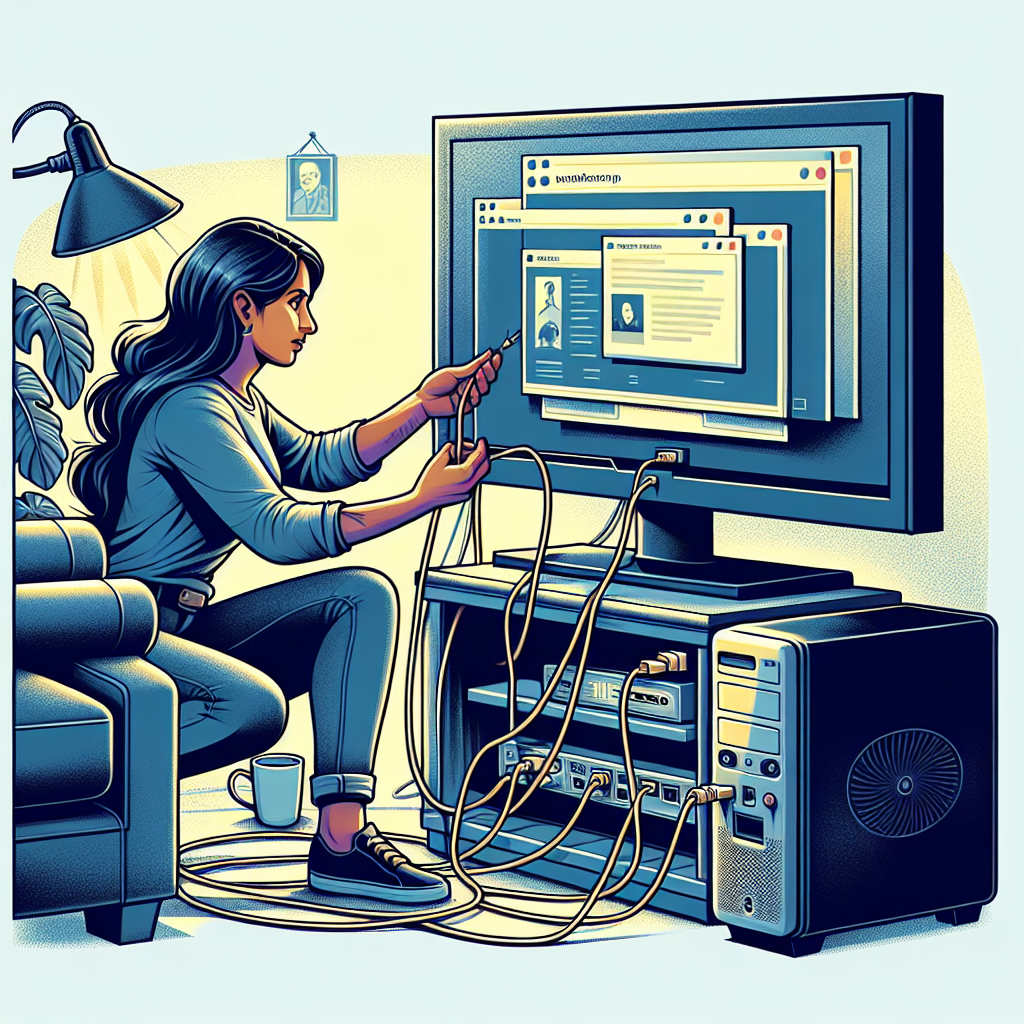
How to Use Your TV As a Computer Monitor?
Using your TV as a computer monitor can expand your digital workspace, provide a larger screen for gaming, and enhance your multimedia experience. However, connecting your TV to your computer isn’t always straightforward. This guide will walk you through the necessary steps, from choosing the right cables to adjusting your display settings for optimal performance.
Benefits of Using a TV as a Computer Monitor
Before diving into the technical details, it’s helpful to understand why you might want to use your TV as a computer monitor:
- Screen size: A larger screen can make work and play more enjoyable.
- Multimedia experience: Enjoy movies, videos, and games on a bigger, higher-definition screen.
- Expanded workspace: Great for multitasking and managing multiple windows.
Comparative Benefits of TV vs. Computer Monitor
Using a TV as a computer monitor has its own set of benefits compared to using a standard computer monitor.
| Feature | TV | Computer Monitor |
|---|---|---|
| Screen Size | Larger | Moderate |
| Resolution | Comparable | Higher |
| Input Options | Multiple | Fewer |
| Price | Varies | Varies |
Necessary Equipment
Before setting up, gather the following items:
- HDMI Cable (High-Definition Media Interface)
- DisplayPort or VGA Cable (if HDMI is not an option)
- Proper adapters (if required)
Step-by-Step Guide to Use TV as a Monitor
- Check TV Ports: Most modern TVs come with HDMI ports. Confirm that your TV has an available HDMI port. Older TVs might require a VGA or DisplayPort connection instead.
- Check Computer Ports: Your computer should ideally have an HDMI output. If it doesn’t, you’ll need a suitable adapter (e.g., DisplayPort to HDMI, VGA to HDMI).
- Connect the Cables: Plug one end of the HDMI cable into your computer’s HDMI port and the other end into the HDMI port on your TV. If using adapters, ensure they are properly connected.
- Select Input Source: Use your TV remote to select the correct input source (e.g., HDMI1, HDMI2). This information is usually displayed when you press the ‘Input’ or ‘Source’ button on your remote.
- Adjust Display Settings: On your computer, adjust the display settings to optimize resolution and screen layout. On Windows, right-click the desktop and select ‘Display settings.’ On macOS, go to ‘System Preferences’ > ‘Displays.’
- Configure Audio: If you want to route audio through your TV, go to the sound settings on your computer and select your TV as the playback device.
Troubleshooting Tips
Sometimes things don’t go as planned. Here are a few troubleshooting tips:
- Ensure all cables are securely connected.
- Set your TV to the correct input source.
- Update your computer’s graphics drivers.
- Try a different HDMI port or cable.
- Ensure your TV supports the computer’s resolution.
Optimizing Display Settings
To get the best visual experience, adjust the following settings:
- Resolution: Match the TV’s native resolution for sharp images.
- Refresh Rate: Set a higher refresh rate for smoother movements.
- Scaling and Layout: Optimize text and icon sizes for a more comfortable viewing experience.
Frequently Asked Questions
Can I use any TV as a computer monitor?
Yes, most modern TVs can be used as computer monitors. Ensure it has the correct input ports like HDMI.
Will there be a lag or delay?
Some TVs might introduce input lag. Look for TVs advertised with low input lag, especially for gaming and real-time applications.
How do I fix blurry text on my TV screen?
Ensure you’re using the TV’s native resolution and check the scaling settings on your computer.
Conclusion
Using your TV as a computer monitor can significantly enhance your viewing and working experience when done correctly. With the right equipment and proper settings, you can seamlessly integrate your TV into your computing setup.


